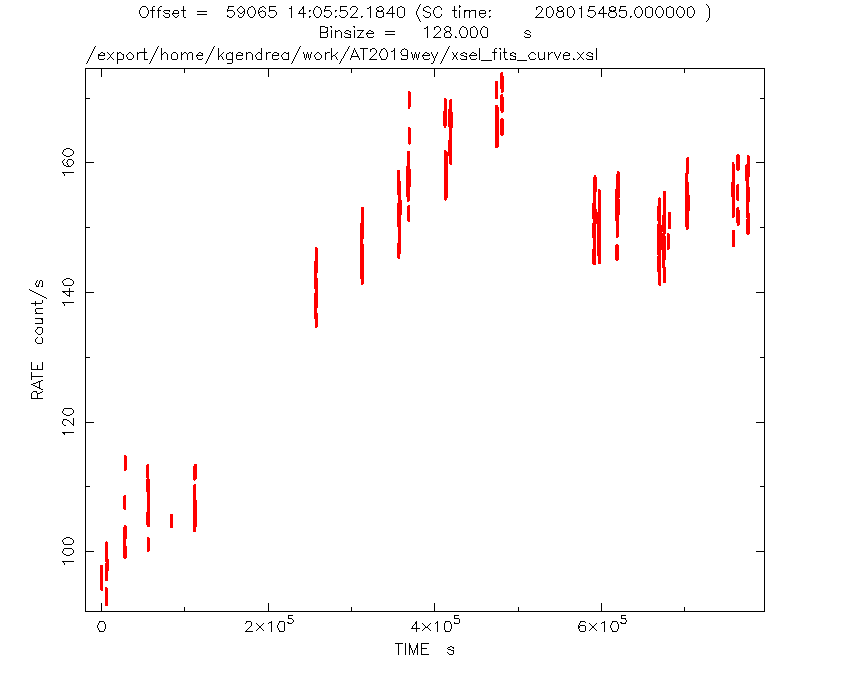NICER / ISS Science Nugget
for August 13, 2020
A Pulsar in Transition?
On 2 August 2020, the NICER team received a Target of Opportunity (TOO) request to characterize the X-ray behavior of a recent optical transient called AT2019wey. The request came from scientists on the Zwicky Transient Facility (ZTF) team, who scan the optical sky nightly with telescopes at Mount Palomar Observatory, CA. AT2019wey is a previously unknown source only recently recognized to be emitting X-rays. In NICER's first observation, AT2019wey was found to be 10x brighter than seen by NASA's Swift telescope a month earlier, prompting a regular monitoring campaign. NICER showed that the source continued to brighten, and this result was announced to the astronomical community this week by Yao et al. via the Astronomer's Telegram (#13932).
Using NICER's timing capability, a search is underway for pulsations to test the hypothesis that AT2019wey is a "transitional millisecond pulsar" (tMSP). A tMSP is a neutron star that pulses alternately in X-rays and in the radio band, depending on whether or not it is actively accreting material from an orbiting companion star - X-rays are a hallmark of accretion, while radio pulsations appear whenever accretion ceases. Only a handful of tMSPs are currently known.

Figure: The NICER measured X-ray intensity of AT2019wey as a function of time. X-rays in the energy range of 0.450 keV to 10 keV were selected.
<< Previous
Main Index
Next >>